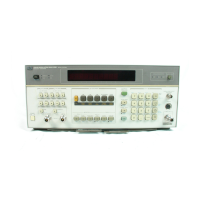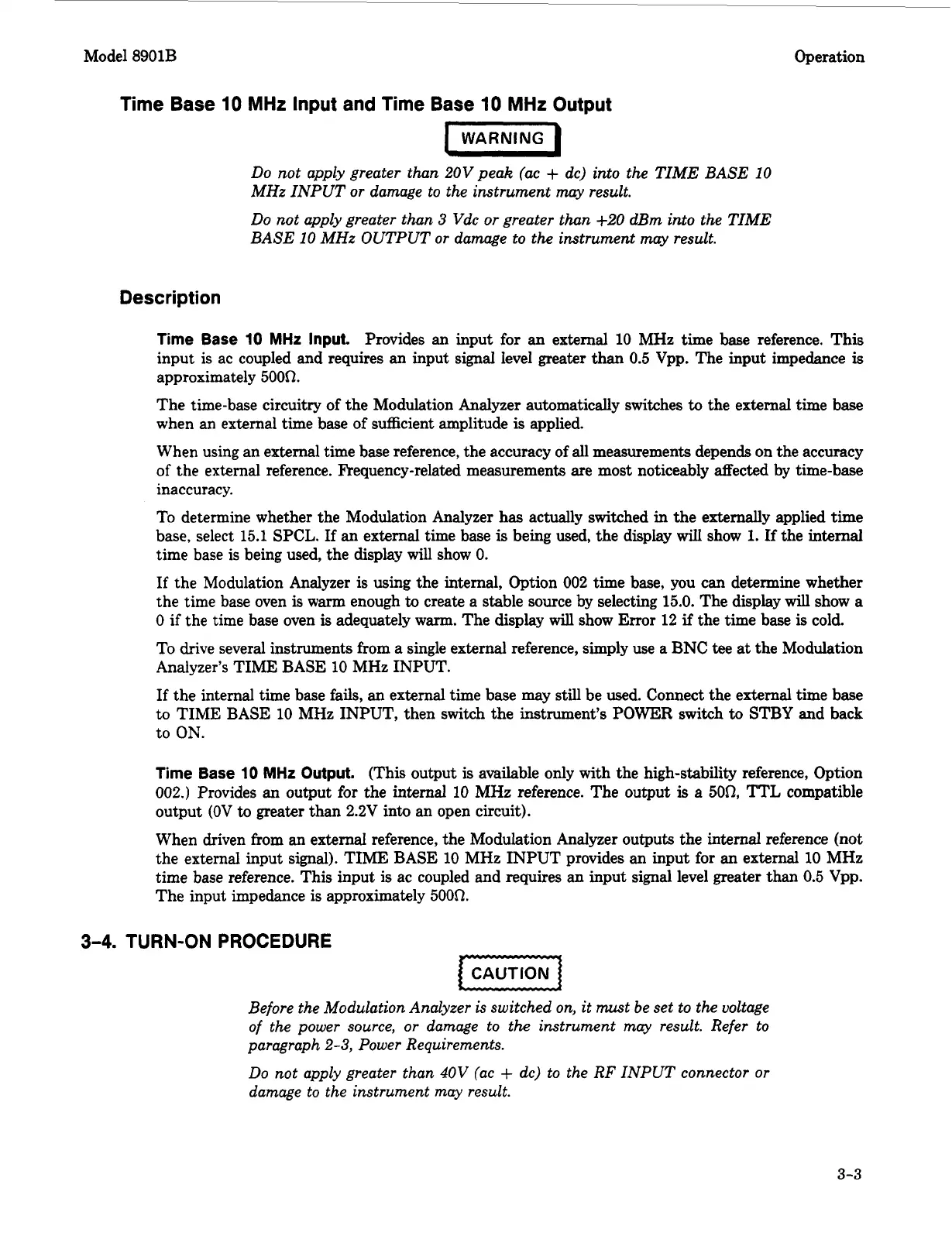Model 8901B Operation
Time Base
10 MHz
Input and Time Base
10
MHz
Output
[-I
Do
not apply greater than 20Vpeak (ac
+
dc) into the TIME BASE
10
MHz
INPUT
or
damage to the instrument may result.
Do
not apply greater than
3
Vdc
or
greater than
+20
dBm into the TIME
BASE
10
MHz
OUTPUT
or
damage to the instrument may result.
Description
Time Base
10
MHz
Input.
Provides an input for an external 10 MHz time base reference. This
input is ac coupled and requires an input signal ievel greater than
0.5
Vpp. The input impedance
is
approximately 5000.
The time-base circuitry of the Modulation Analyzer automatically switches
to
the external time base
when an external time base
of
sufficient amplitude
is
applied.
When using an external time base reference, the accuracy of
all
measurements depends on the accuracy
of the external reference. Frequency-related measurements are most noticeably affected by time-base
inaccuracy.
To determine whether the Modulation Analyzer has actually switched in the externally applied time
base, select 15.1
SPCL.
If
an
external time base
is
being used, the display
wilI
show
1.
If the internal
time base is being used, the display will show
0.
If the Modulation Analyzer
is
using the internal, Option 002 time base, you can determine whether
the time base oven is warm enough
to
create a stable source by selecting 15.0. The display
will
show
a
0
if
the time base oven
is
adequately warm. The display
will
show Error 12
if
the time base
is
cold.
To
drive several instruments from
a
single external reference, simply use a BNC tee at the Modulation
Analyzer’s TIME BASE 10 MHz INPUT.
If the internal time base fails,
an
external time base may still be used. Connect the external time base
to TIME BASE
10
MHz INPUT, then switch the instrument’s POWER
switch
to
STBY
and back
to ON.
Time Base
10
MHz
Output.
(This output
is
available only with the high-stability reference, Option
002.)
Provides an output for the internal
10
MHz reference. The output
is
a
500,
TTL
compatible
output
(OV
to
greater than 2.2V into an open circuit).
When driven from an external reference, the Modulation Analyzer outputs the internal reference (not
the external input signal). TIME BASE 10 MHz INPUT provides an input for
an
external 10 MHz
time base reference. This input
is
ac coupled and requires an input signal level greater than 0.5 Vpp.
The input impedance is approximately 500fl.
3-4. TURN-ON PROCEDURE
Before the Modulation Analyzer
is
switched on, it must be set to the voltage
of the power source,
or
damage to the instrument may result. Refer to
paragraph
2-3,
Power Requirements.
Do
not apply greater than
40V
(ac
+
dc) to the RF INPUT connector
or
damage to the instrument may result.
3-3

